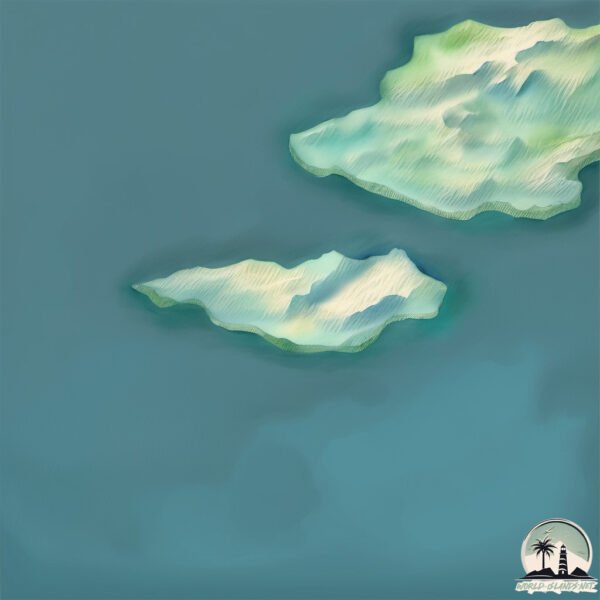Welcome to Dolphin Island , a Polar island in the Hudson Strait, part of the majestic Arctic Ocean. This guide offers a comprehensive overview of what makes Dolphin Island unique – from its geography and climate to its population, infrastructure, and beyond. Dive into the details:
Geography and size of Dolphin Island
Size: 0.287 km²Coastline: 2.7 kmOcean: Arctic OceanSea: Hudson StraitContinent: North America
Dolphin Island is a Tiny Island spanning 0.287 km² with a coastline of 2.7 km.
Archipel: –
Tectonic Plate: North America – Covers North America and parts of the Atlantic and Arctic Oceans, characterized by diverse geological features and varying levels of seismic activity.
The geographic heart of the island is pinpointed at these coordinates:
Climate and weather of Dolphin Island
Climate Zone: PolarClimate Details: TundraTemperature: Cold
Climate Characteristics: The tundra climate features long, extremely cold winters and short, cool summers. Vegetation is limited to mosses, lichens, and small shrubs due to the low temperatures and short growing seasons. Biodiversity is low, but some specialized species thrive.
Topography and nature of Dolphin Island
Timezone: UTC-05:00Timezone places: America/New_YorkMax. Elevation: 12 m Mean Elevation: 2 mVegetation: Deciduous Needleleaf ForestTree Coverage: 59%
The mean elevation is 2 m. The highest elevation on the island reaches approximately 12 meters above sea level. The island is characterized by Plains: Flat, low-lying lands characterized by a maximum elevation of up to 200 meters. On islands, plains are typically coastal lowlands or central flat areas.
Dominating Vegetation: Deciduous Needleleaf Forest
Vegetation: 1 vegetation zones – Minimal Diversity Island
Infrastructure and Travelling to Dolphin Island
Does the island have a public airport? no .
Does the island have a major port? no .
The mean population of Dolphin Island is 0 per km². Dolphin Island is Uninhabited. The island belongs to Canada .
Continuing your journey, MacColl Island is the next notable island, situated merely km away.
10 Best Things to Do on Dauphin Island
Hi friends! Welcome back to our channel! Today's video is about Dauphin Island, Alabama. This video is your ultimate tour guide, ...
10 Best Things to Do on Dauphin Island
Hi friends! Welcome back to our channel! Today's video is about ...
Hi friends! Welcome back to our channel! Today's video is about Dauphin Island, Alabama. This video is your ultimate tour guide, ...
Dauphin Island Alabama Travel Guide: 13 BEST Things To Do In Dauphin Island
This Dauphin Island travel guide shares the best things to do in ...
This Dauphin Island travel guide shares the best things to do in Dauphin Island. -------------- How to travel more and visit your ...
Discovering Dauphin Island
Join us as we explore Alabama's very own island town, Dauphin Island! ...
Join us as we explore Alabama's very own island town, Dauphin Island! We'll begin by making our way to the eastern end of the ...
Canada is classified as Developed region: G7: Group of Seven – Major advanced economies, including Canada, France, Germany, Italy, Japan, the United Kingdom, and the United States. The level of income is High income: OECD.
News – Latest Updates and Headlines from Dolphin Island
Stay informed with the most recent news and important headlines from Dolphin Island. Here’s a roundup of the latest developments.
Loading...
Please note: The data used here has been primarily extracted from satellite readings. Deviations from exact values may occur, particularly regarding the height of elevations and population density. Land area and coastline measurements refer to average values at mean high tide.

